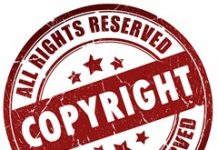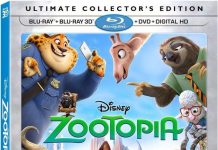![image37[1] image37[1]](http://www.teleread.com/wp-content/uploads/2011/05/image371_thumb.png) On The Bookseller today, Scott Pack has a post pointing out a problem with the way top-ten book lists are figured now: in particular, they leave out e-book sales figures.
On The Bookseller today, Scott Pack has a post pointing out a problem with the way top-ten book lists are figured now: in particular, they leave out e-book sales figures.
Currently, e-book sales do not register for the book charts. Up until quite recently that hasn’t been a huge problem as e-books have only represented a small percentage of total sales. But that is changing, and changing fast, and we are now seeing e-books sell in the tens of thousands, and soon in the hundreds of thousands, without a single one of those sales registering for our industry chart.
He points out that this means charts are not necessarily accurate—some books might have sold well enough electronically compared to current titles in the top ten that they should be included. And it also gives publishers added incentive to push print books rather than e-books: an e-book sale won’t “count” toward earning those cherished top-ten-list spots.
Pack calls for all retailers to share sales data with the compilers of the top ten lists. I’m a little surprised they haven’t been doing it already, though as secretive as they are I guess I shouldn’t be. Certainly, the more market share e-books get, the more imperative publishers will find it to insist e-book retailers share their sales figures. And as agency pricing proved, if publishers really want to make a change, retailers will have no choice but to go along.

































I don’t think this is quite accurate. There are top 10 ebook lists, for example, in the New York Times. The NYT has for decades segregated 10 ten lists by form factor, age group, and content, that is, there have been top 10 lists for adult fiction + hardcover, adult fiction + paperback, adult nonfiction + hardcover, and adult nonfiction + paperback, as well as for children’s books. Within the past year ebooks have been added.
I think what the Scott Pack is bemoaning is the lack of a single top 10 list that merges ebooks with another form factor. But once you do that, shouldn’t you merge all form factors so that the lists are simply adult nonfiction, adult fiction, and children’s?
If that were to occur, how would indie authors be represented in the top 10? As it is, the exclusion of indie titles is a major problem but merging the lists would make it moreso. I would like to see a separate ebook top 10 maintained but be more inclusive. I’m not convinced at this point in the evolution (revolution?) of ebooks that there is a direct relationship between those books read as ebooks and those read as pbooks with a few exceptions. Until there is such a direct relationship, having separate lists is still useful as a way to see how the ebook world grows.
I certainly agree with Richard; the distinctions are far more informative than the aggregations. The genre distributions, for example, have provided one of the distinctive factors for understanding screen and print book relations.
I suspect eBook readers’ lists would be significantly different from pBook readers. Many pBooks are impulse purchases or arguably more susceptible to mass market advertising. I find eBook discussions (MobilReads and Goodreads for example) to be more literary and less pop fiction. That may change with time and even out, but it’s a trend now. In my opinion, many national “best sellers” are more aptly labeled “best advertised.” A best-seller is not necessarily a ‘good’ book. I use best-seller lists as a starting point, but seldom rely on them directly for purchasing decisions. Only after a book has stood the test of time and knowledgeable reader criticism does it earn a place on my shelf/eReader, so very few of my books are new releases.
Yeah, nothing like having an uninformed opinion. NYT has an e-book list, and a combined list…started back in February, as I recall.
New York Times e-book list is now 14 weeks old. You can make comparisons between their e-book only fiction, paper only fiction, hard cover over fiction, all paper + ebook fiction … and then rinse, recycle and repeat for non-fiction.
It is a best-seller list … not a best quality list … but so what? It is what it is: a sales barometer. I’d like to see other leading compilers (such as a UK or Canadian list) but for the time being we have the New York Times and the “hourly/daily” sales at Amazon and Kobo.